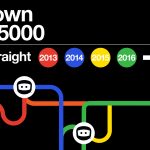Berlin vs Fabi or meet Swedish Dynamite Andreas Ersson
Fabi is our trainee and since a few months the Rock Imaging Director here at Benztown. His 3 years education program will end next year. In my opinion he is ready to roll and able to enrich any radio station in the world with his production skills. Last week I sent Fabi to Berlin to catch up with one of the oldest friends, I have in the Imaging world Andreas “Beavis” Ersson. Like me he has been around since very young age and used to be the head of imaging for NRJ and freelancing for many others. Andreas is swedish, a really unique and casual sounding VO talent and today he oversees the Top Radio Vermarktung in Berlin. He basically is the head of production for 3 stations using very successfully a combo of Benztown CHR / FAME FX and creating magic for KISS FM Berlin himself. Fabi had the chance to hang out with him for 2 days, learn a few new tricks and interviewed him for the blog. Check out Andreas’ session templates and listen to the (German) audio of the maybe hottest imaged German CHR station. Enter Fabi vs Berlin.
[soundcloud width=”100%” height=”81″ params=”” url=”http://api.soundcloud.com/tracks/24418325″]
[soundcloud width=”100%” height=”81″ params=”” url=”http://api.soundcloud.com/tracks/24418355″]
1. which production system do you use at Kiss?
I’m using a Pro Tools 7HD system.
2. what are your favorite plugIns (including screenshots)?
My favorite plugIn is Time Stretch.
3. what do you like about being head of production at Kiss?
The best thing for me is sharing my wisdom, experience and know-how with the aspiring youngsters. People expect that from me and it’s definitely fun, too.
4. what is the best pro tools or production trick, everybody should know?
Organisation is the keyword. Organisation is the best trick for good work. We are working with labeled tamplates for every usage. This is always better than creating your sessions from scratch, every time again.
Also solid routines for back-ups, labelling, voice recording or the selection and archieving music and FX are making a lot of things much easier. You aren’t stressed anymore with thoughts like: “Hmm… How do I label that track?” or “Where do I put this song now?” or “How did I label this voice take again?” or “Where’s session xy from year xy?”. The mind is free of such thoughts and you have more room to think creative and it increases your workflow.
5. how do you get inspired and what is your source of creativity?
I listen to a lot of radio. My family is already annoyed, because everywhere I’m going I leave the radio on :). That’s how I get inspiration through other products. It’s great that nowadays you can listen to radio from all over the world through the internet. I listen to the work of others worldwide and maybe try to do it a bit better than them. If I hear something, I don’t like, I feel confirmed, when I say: “That’s why I don’t want to do this.”
During my past in advertisement, I learned to think creatively, to use little flashes of inspiration to create a good final product. Go through the world with open eyes and ears. Inspiration is everywhere, just absorb everything creative. Even the sound of a bird tweeting or a funny thing that happens to me, can be very inspiring.
6. who was your production teacher?
Unfortunately or luckily, I never had an instructor, who showed me how it works. More or less, I taught myself by listening, trying out new things and making mistakes. So I learned what sounds good and what works and how to make it as good as possible. I had a basic training at the SAE and like said, the rest I taught myself. In my opinion, it is a big advantage, because I had no instructor and had to make my own mistakes. And it’s a well-known fact that you learn most through your own mistakes.
7. who were your radio production idols, who influenced your work as a producer?
All in all, my dad is my idol. In my field of work, there’s not really somebody, I adore. Of course, there are producers, I can learn of, but I couldn’t nae a special one at the moment.
8. what would be your key advices for a youngster?
Listen to a lot of radio. Also other formats like Classic Hits for example to learn how such a format is imaged.
You can even learn through commercial breaks, mostly how it’s not done. But there’s a lot of good stuff in commercial breaks. Every time you hear something good, try to find out what exactly was the good thing and and find out how it’s done.
9. how do you manage your time to produce three stations at the time with different formats?
I don’t produce everything on my own. I have a team of very good producers on which I can rely to on 100%. Of course, you have to be able to assign jobs to others. Producing every element on my own, would be impossible. However, it’s important to keep the overview over everything, make right decisions and know what’s everyone doing.
10. what was your greatest moment in radio?
My greatest moment in radio was when I first heard my first self produced element on the radio.
What was it?
Well that’s a bit devastating now, but to be honest, I don’t remember anymore. I just remember that I was really proud of myself 🙂
Thanks to Andreas for his interview, his screenshots and audio


;)